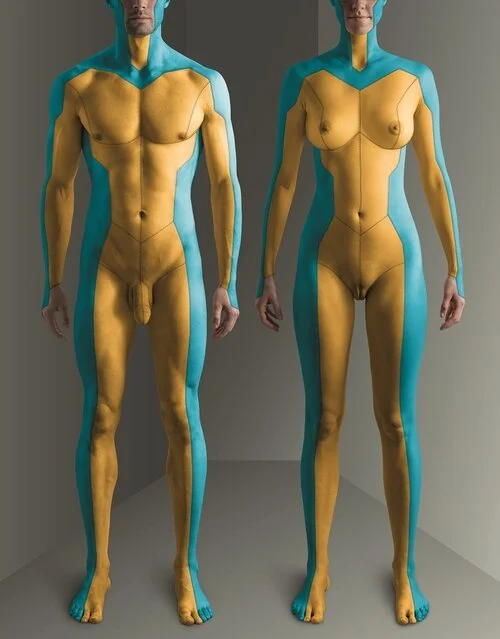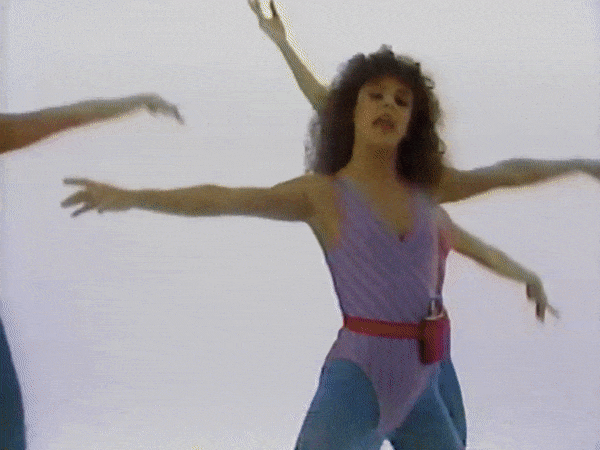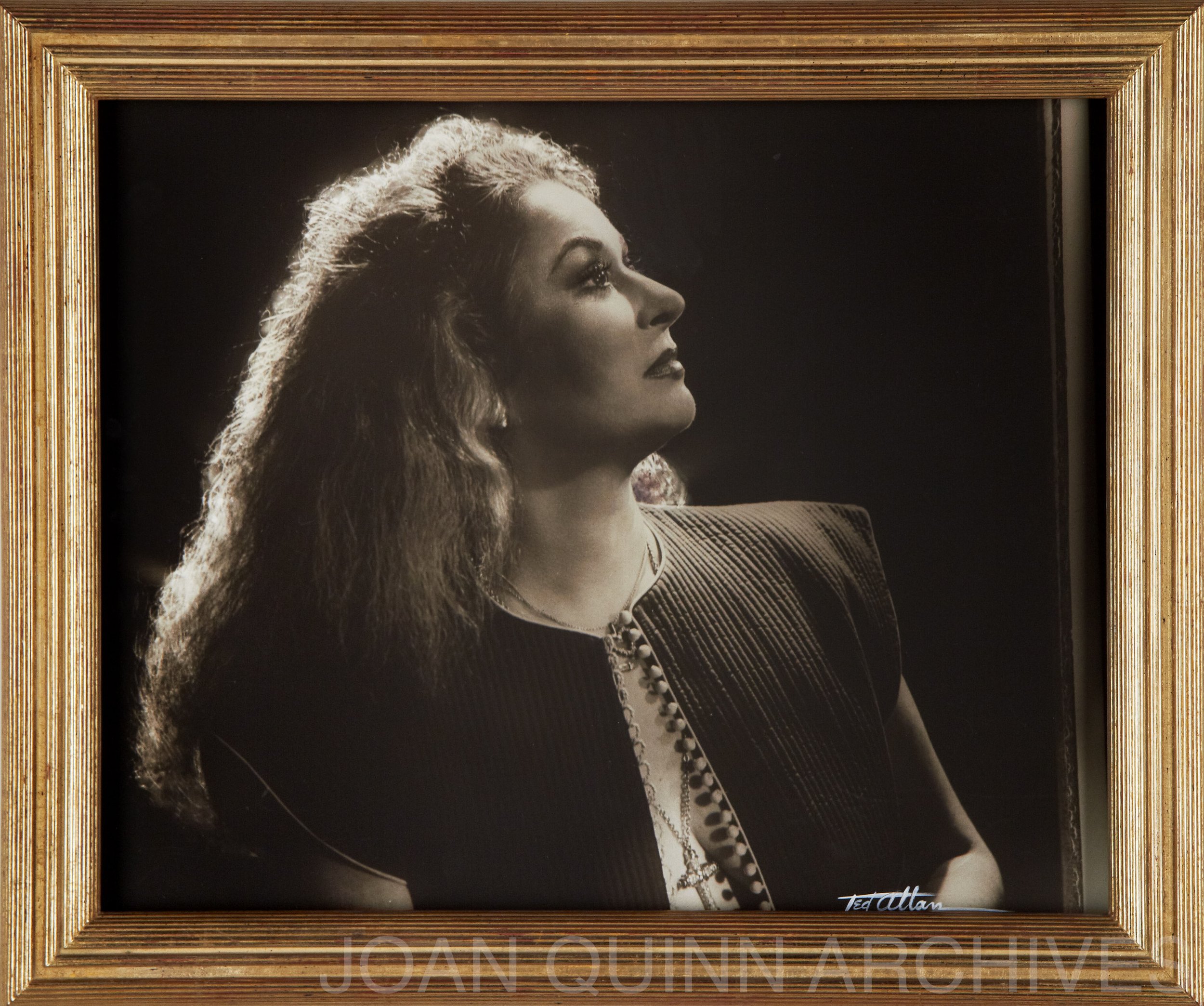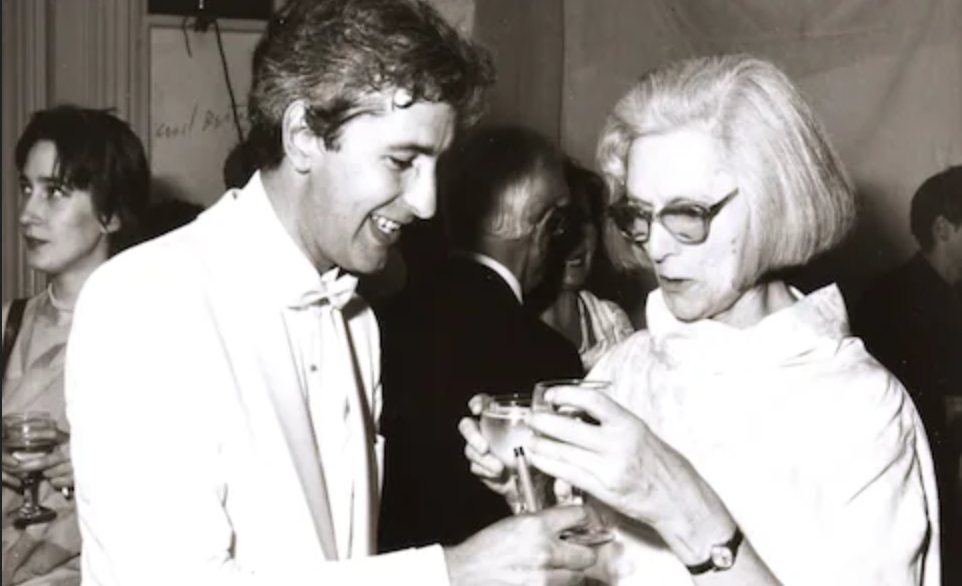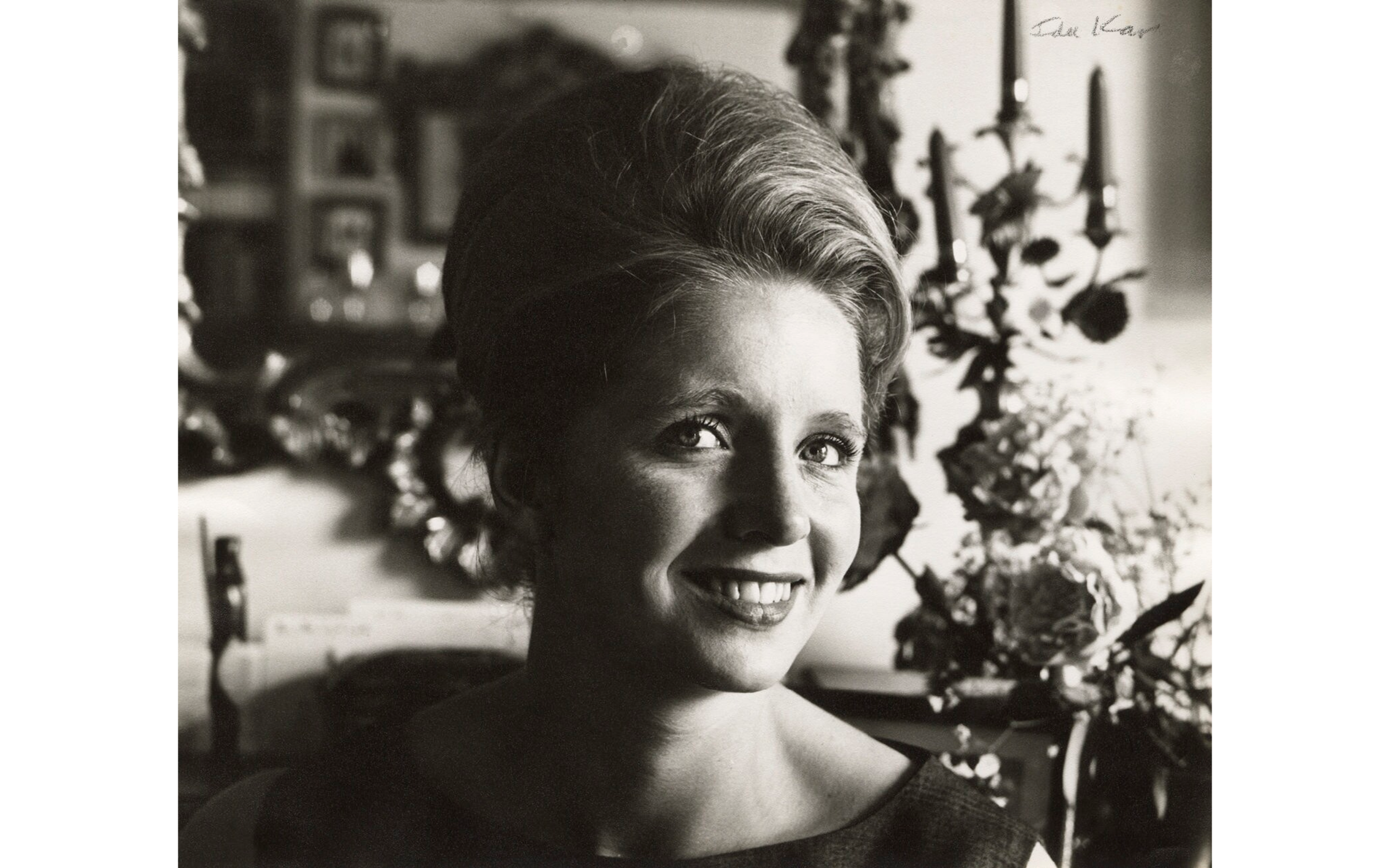Episode 39: Allen Jones
Allen was born in Southampton in 1937 and grew up in the London suburbs. He studied painting and lithography at Hornsey College of Art between 1955 and 1959, after which he entered the Royal College of Art alongside what was to become the first generation of British pop artists. After teaching art and exhibiting for a few years, in 1964 he moved to New York for a year, before going on an extended tour of the United States by car. This trip proved to be incredibly influential in his career—connecting him with the American pop art scene, helping him develop a more hard-edged painting style, and introducing him to fetish imagery. In 1970 he premiered his most controversial works—sculptures of pneumatic female mannequins as furniture: a chair, a hat stand, and a table. The feminist backlash made him into a household name. One of Britain’s most famous living artists, at 85, he continues to paint everyday day in his large barn-like studio in the beautiful English countryside.
Episode 38: Letty Cottin Pogrebin
From Queens, Letty grew up in a conservative Jewish family. At age 20 in 1960, she became the director of publicity for the publishing company Bernard Geis Associates—later rising to vice president. There she was instrumental in making books like ‘Valley of the Dolls’ and ‘Sex and the Single Girl’ into mega-bestsellers. In 1970, she wrote her first book, ‘How to Make it in a Man’s World’; after its success, she left her job to focus on writing and raising her family. She was a founding member of the National Women's Political Caucus, through which she met Gloria Steinem; in 1972, they founded Ms. Magazine together. Letty was an editorial consultant for the 1972 TV special ‘Free to Be... You and Me’ for which she earned an Emmy. Throughout the 70s, 80s, 90s and up to today, she has continued writing books—centering on subjects around the family, raising children, being a working woman, aging, and Judaism. Her latest book, ‘Shanda: A Memoir of Shame and Secrecy,’ was released in 2022; in it she unfurls generations of secrets in her family and discusses how the Jewish teaching of “Shanda,” or shame, perpetuated constant paranoia and secrecy. Letty and I chat about everything—her childhood, the abortions she had in college in the 1950s, how she got her start in publishing, her almost 60-year marriage to labor lawyer Bert Pogrebin, what ‘Mad Men’ got right about the 1960s, discovering feminism, Ms. Magazine, balancing career and family life, being a working writer, and rediscovering Judaism.
Episode 37: James Fritzhand
Originally from Brooklyn, James Fritzhand published his first novel in 1971, ‘Son of the Great American Novel.’ He then went on to publish seventeen further novels, across many genres and using several pseudonyms—from showbiz roman a clefs to sagas to gothics to adventure novels and more. In the early 1980s, Fritzhand became a television screenwriter—writing for many of the major prime time soaps of the era: ‘Falcon Crest’, ‘Flamingo Road’, and ‘Hotel’ (which he also produced for a season). Around 2000, he retired from showbusiness and moved to northern California, where he lives a quiet life with his partner of 46 years. Jim and I talk about growing up in Brooklyn in the 50s and 60s, discovering himself as a writer, how he went from literary fiction to popular fiction to TV writing, meeting his partner in a gay bathhouse, AIDS, the quiet life, losing everything in the Tubbs Fire, and his passion for birding.
Episode 36: Steven Heller
Fashion and cultural historian Laura McLaws Helms speaks with art director and author Steven Heller. An incredibly creative and prolific individual, Steven is the author, co-author or editor of over 200 books on graphic design, illustration and political art. I interviewed him in the fall, around the publication of “Growing Up Underground: A Memoir of Counterculture New York,” which details his teens and early 20s working in the counterculture press. At 17 he became the art director at the counterculture weekly, the New York Free Press. He then went on to work for Screw, the East Village Other, Rock, Gay, Mobster Times, and Evergreen Review, before being poached at age 24 by the New York Times to be the art director of the Op-ed page. Steve was an art director at The New York Times for 33 years; 3 years on the Op-ed page, before moving to the Book Review. He became a senior art director in 1980. Steven is the co-founder and co-chair of the MFA Design Department and co-founder of the MFA Design Criticism, MPS Branding, MFA Interaction Design, and MFA Products of Design programs at SVA. Heller is also the recipient of the Smithsonian Institution National Design Award for "Design Mind," the AIGA Medal for Lifetime Achievement and other honors.
Episode 35: Bess Motta
Bess Motta was born and raised right outside Los Angeles, and began acting in school plays at a young age. After high school, she went on to star in “The Great American Backstage Musical” on stage in San Francisco and London—arriving back from her British sojourn thirty pounds heavier. Needing to lose weight for auditions led her to join a gym and try aerobics; within months she had lost the weight and was leading sixteen classes a week. She was elevated to fitness fame as one of the instructors of “20 Minute Workout,” and began traveling the country to lead workouts and host fitness competitions in malls nationwide. In addition to teaching fitness for forty years, Bess has continued to act—her most famous role being Ginger, Sarah Connor’s roommate in “The Terminator.” In 2016, Bess returned to the stage to star as Judy Garland in the west coast theatre premier of “The Boy from Oz,” for which she won the LA Stage Alliance Ovation Award for Best Featured Actress in a Musical and Best Featured Performance from the Los Angeles Drama Critics Circle.
Episode 34: Emanuel Schongut
Manny Schongut has had a long and diverse career as an illustrator. From upstate New York, Schongut studied and taught at Brooklyn’s Pratt Institute before becoming a freelance illustrator. During the 1960s, Schongut became known for his distinctive book covers, often for science fiction and crime novels, that brought together watercolour and pen-and-ink in intriguing graphics. In the early 1970s, he was represented by Push Pin Studios, the legendary graphic design and illustration firm founded by Milton Glaser and Seymour Chwast. Taking a more traditional figurative tack, Manny’s work appeared in New York magazine, the New York Times, Vogue, Town & Country, Redbook, and many other publications. Starting in the 1970s, Schongut began working on children’s books—so far, he has illustrated over twenty, and been the author of five of those. Based in San Francisco since the early 1990s, 86-year-old Manny continues to create.
Episode 33: Pat Runningbear Evans
One of the most memorable models of the late 1960s and 1970s, Pat Evans was born and raised in Harlem. After she shaved her head, her modeling career became highly successful with Pat starring in ad campaigns, editorials and on the cover of three legendary Ohio Players albums. Unwilling to put up with the way Black women were treated as models, she moved into designing – creating handmade leather clothes that were worn by superstars like Isaac Hayes. Pat also worked as a makeup artist for yet more superstars, Aretha Franklin among them, before founding her own modeling agency. A religious experience led her to close her agency and move to the country in the early 1990s, focusing since then on her spiritual experience and on making traditional Native American clothes, moccasins, and objects. She lives a quiet life away from fashion industry but kindly took the time to reminisce and share her experiences with us.
Episode 32: Joan Agajanian Quinn
Joan Quinn has been a major force in the Los Angeles art scene for 70 years, as a collector, promoter, advocate, and friend to generations of artists. While amassing a large “accumulation” of art, her passion and collecting zeal also made her a muse for artists—what started as some artist friends painting and sculpting her portrait in the seventies, has now grown into a collection of over 300 portraits of Joan. In the late 1970s, Andy Warhol asked her to become West Coast editor of Interview magazine; a role she later held with several other publications. From the mid-1980s until 2020, Joan hosted public access TV shows where she interviewed artists and creatives.
Episode 31: Rory Trifon, The Estate of Richard Bernstein
Known for his saturated, highly glamorous covers for Interview magazine, Richard Bernstein was born in New York in 1939; he passed away from AIDs-related complications in 2002. Richard created the cover for every Interview magazine up until Warhol's death in 1987—a prodigious volume of work that serves as an archive of 1970s and 1980s celebrity culture. In the late 1970s, Richard Bernstein became friends with Grace Jones, helping to mold her visual identity as she first emerged as a singer. The duo continued to work together for many years. Richard was also an early innovator in digital art.
Rory is Richard's nephew and the one entrusted with maintaining and carrying forward his legacy. In our conversation, he provides a short biography of Richard, his artistic career and his relationship with Andy Warhol. We then speak about what is like to run an artist’s estate, what it entails, and the process of archiving. Rory was instrumental in the creation of a coffee table book on Richard, Starmaker, which was published by Rizzoli in 2018; he has also loaned Richard’s work to numerous museum exhibitions and collaborated with a number of fashion and interiors brands.
Episode 30: Edina Ronay
Edina Ronay is a fashion designer, actress and model. Born in Budapest to a family of successful restaurateurs, Edina fled to London with her parents after the war. There her father opened a restaurant and then founded what became a very successful and influential series of guidebooks, starting with Egon Ronay's Guide to British Eateries in 1957. As a teen Edina became an actress, appearing in a number of cult British films. She was a key member of the hip London scene and dated Michael Caine before she met her husband, photographer Dick Polak. With him, she lived in Morocco and Formentera, until they returned to London to act, model and have children. In the early 1970s, Edina began selling vintage clothes. When she discovered a cache of 30s and 40s vintage knitting patterns in 1978, a new business was born. Highly successful from the start, Edina & Lena sold their hand knits in stores all over the world. In the 1980s Edina took over full control of the company—renamed Edina Ronay, it expanded into dresses and separates.
Episode 29: Susan Wood
Susan Wood is a New Yorker born and bred. She started her career in the early 1950s, working in the lab at LIFE magazine before having her first photo published in Harper’s Bazaar in 1955. Over the subsequent decades, Susan photographed for everyone and truly across all genres. Fashion, interiors, portraits, food, travel, crafts, documentary, and movie stills—Susan did it all at a time when there were very few female photographers in the industry. Among the magazines she worked for were Vogue, New York Magazine, Ladies Home Journal, Mademoiselle, People, LOOK, Good Housekeeping, and Glamour. We discuss her 60 year career, what it was like working as a female photographer at that time, her creative process, the many famous people she has photographed and much more.
Episode 28: Hugo Vickers
Hugo Vickers is a writer, historian and broadcaster who discovered his interest in history and the royal family while still at school. He is the author of many books about the royal family, the British aristocracy, Cecil Beaton and other related topics. In his twenties he began researching a famed beauty he had seen mentioned in a book as a teenager—according to all reports she had disappeared but Hugo found her living in a geriatric psych ward. Thus began the several year process of interviewing her and researching Gladys’ life as the Duchess of Marlborough—his biography of her was published in 1979 to much acclaim. This book led to a request from Cecil Beaton to write his biography, followed by books about Garbo, Vivien Leigh, and many members of the royal family. After quickly establishing himself as an expert on all matters to do with the royal family, Hugo made his first appearance as a royal commentator during Charles and Diana’s wedding in 1981. Since then he has become one of the most well-known and highly regarded in the UK.
Episode 27: Shirley Lord
Shirley Lord is a journalist, beauty editor and expert, and novelist, who rose from working-class Cockney lass to one of the most influential people in the beauty industry through grit, good humor, and a passion for journalism. A features editor for a British women’s magazine by age 24, three years later she married the carpet tycoon Cyril Lord. Weaving easily between high-class entertaining and a high-powered career, Shirley worked for British Harper’s Bazaar and the Evening Standard in London before leaving her marriage in the early 1970s to move to New York. After a stint as beauty director of Harper’s Bazaar, she became beauty editor of Vogue—a job that she would have in some capacity for most of the next 40 years, only leaving briefly to be vice president of Helena Rubinstein. In the 1980s she married Abe Rosenthal, the legendary editor of the New York Times—they were together until his death in 2011. Shirley Lord has written two beauty books as well as several novels drawing on her deep knowledge of the glamorous fashion and beauty industries.
Episode 26: Tere Tereba
This week on Sighs & Whispers, fashion and cultural historian Laura McLaws Helms meets with fashion designer, actress, writer and all-around creative Tere Tereba. As a teenager Tereba began designing for Arpeja, the largest LA-based multi-brand fashion company who owned Young Edwardian, Young Innocent and many others. Quickly making a name for herself, over the next twenty years Tereba designed for all of the major Los Angeles fashion companies (including Malibu Media and Jody T.), before starting her own eponymous high-end line in the late 1980s. Alongside her high-powered fashion design career, Tere maintained a very busy social life among the upper echelons of the film and art worlds—good friends with the likes of Andy Warhol, she also spent a lot of time in Paris and Rome in the 1970s with the crème de la crème of the European movie world. After many years of friendship she acted in Andy Warhol’s Bad in 1977. After ten years of research, her book on a notorious gangster (Mickey Cohen: The Life and Crimes of L.A.'s Notorious Mobster) was published in 2012.
Episode 25: Meryl Meisler
Meryl Meisler is an acclaimed photographer known for her street and documentary work. Meisler began photographing in the mid-70s, focusing on the Jewish community in her hometown on Long Island as well as the nightlife scene in NYC. After becoming an art and photography teacher at a public school in Bushwick, Brooklyn, she continued to shoot the world and people around her. Following her retirement in 2007 that she began to delve into her old, boxed-up contact sheets and negatives—revealing a New York that was long gone, captured in a totally individual and unique manner. Since then Meisler’s photographic career has had a renaissance; publishing three books of her photographs—centering mostly on Bushwick, disco and Long Island suburbia—and has participated in countless gallery exhibitions.
Episode 24: Carole Bell Ford
Carole Bell Ford is an educator, historian and writer. Born to Jewish immigrant parents in Brownsville, Brooklyn, in 1934, Carole’s choices led her away from the narrow options available to her in Brownsville at the time, eventually leading her to get her master’s and her doctorate, live in Europe, start writing and launch a whole new career—she has since published four books. She joins host Laura McLaws Helms to discuss the Brownsville of her childhood, the opening up of women’s lives and options in the last 70 years, her careers and relationships, the appeal of oral history, road trips and more.
Episode 23: Penny Arcade
A runaway at thirteen, a reform-school graduate at sixteen, a performer in the legendary New York Play-House of the Ridiculous at seventeen, and an escapee from Andy Warhol’s Factory scene at nineteen, Penny Arcade emerged in the 1980s as a primal force on the New York art scene and an originator of what came to be called performance art.
Episode 22: Charlie Morrow
Charlie Morrow is a sound artist, composer, musician, producer, conceptualist, performer, magazine editor and former jingle writer. He joins host Laura McLaws Helms to discuss all aspects of his life, work and creative process. A true multi-hat, his creative projects have included chanting and healing works, museum and gallery installations, large-scale festival events, radio and TV broadcasts, film soundtracks, advertising jingles and commercial soundscapes. Among his many projects he organized a Summer Solstice celebration annually in NYC from 1973 to 1989.
Episode 21: Barbara Nessim
An artist, teacher, creative visionary, Barbara Nessim is a completely inspiring soul. A highly successful commercial artist for several decades, Barbara was one of very few full-time professional women illustrators working in the United States during the 1960s. In the 1980s Barbara became an early pioneer in computer art—one of the few classically trained artists at the time who saw the value in wedding fine art with computer technology.

